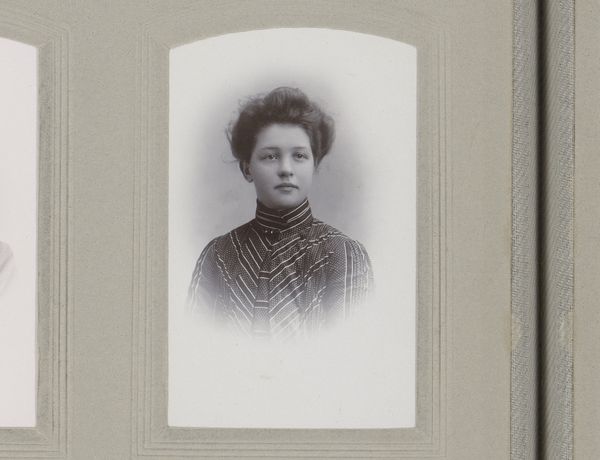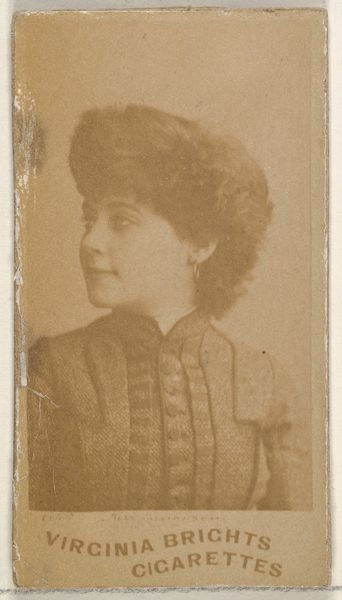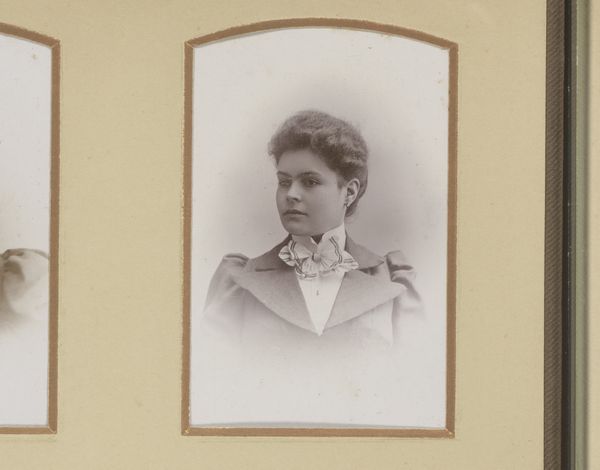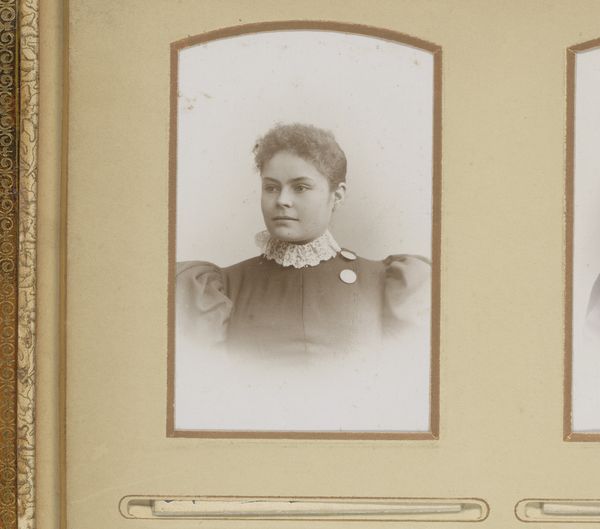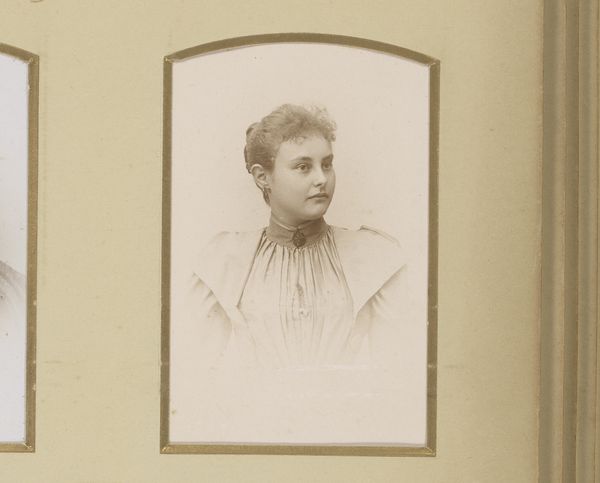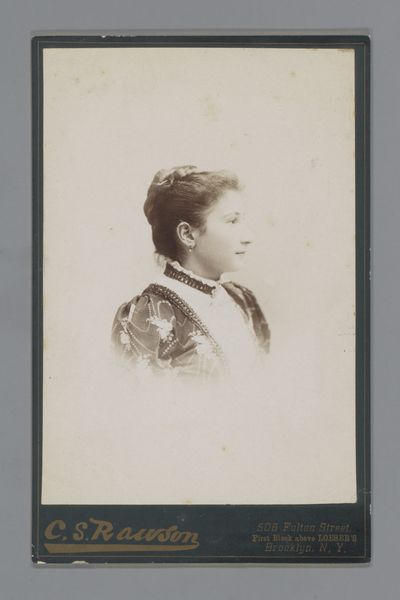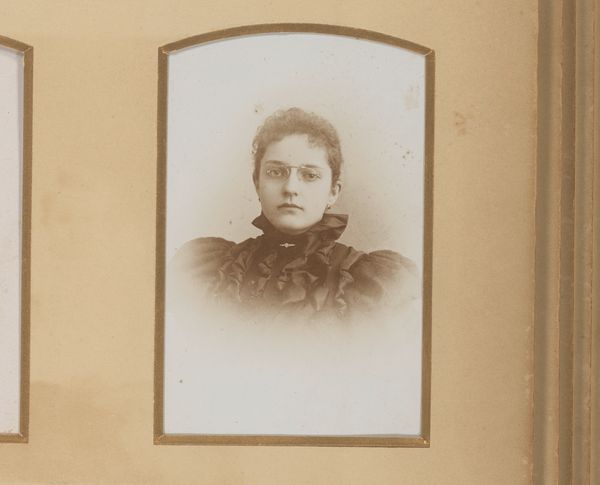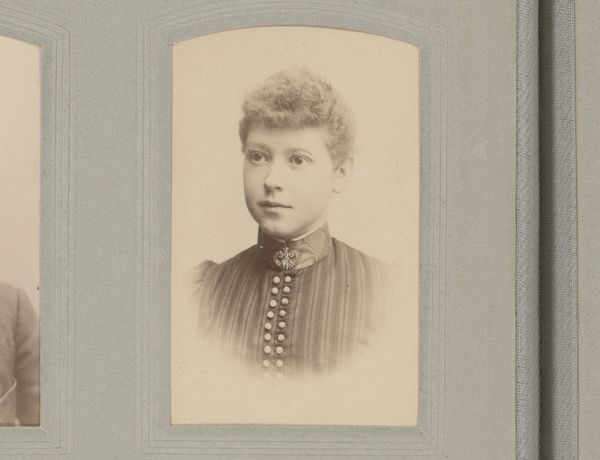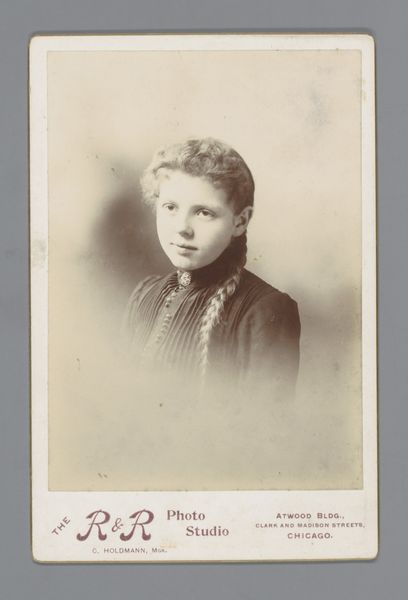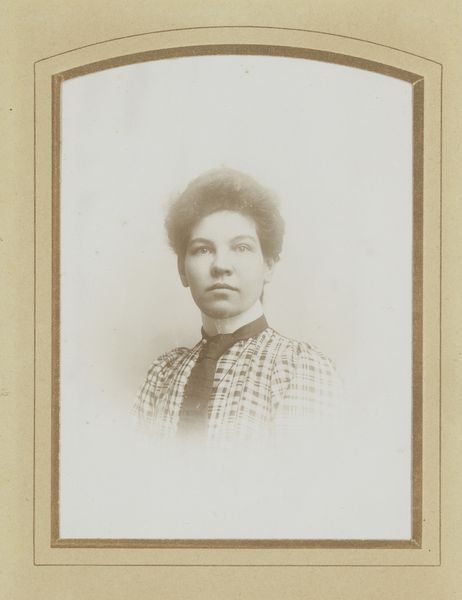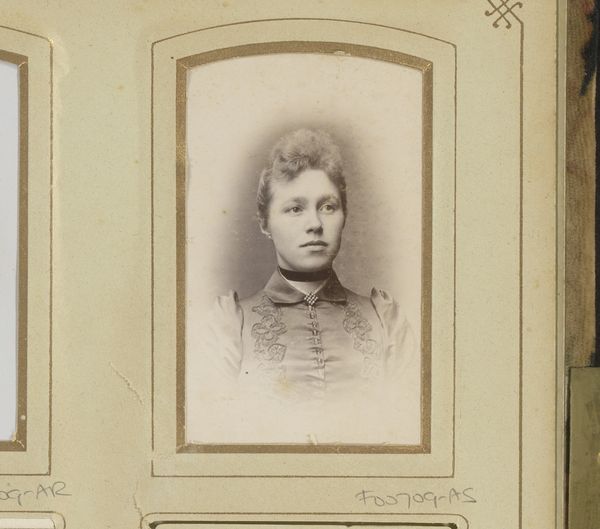
photography
#
portrait
#
photography
Dimensions: height 83 mm, width 51 mm
Copyright: Rijks Museum: Open Domain
Editor: This is "Portret van een jonge vrouw, aangeduid als Signe Pettersson" by Tore Ulander, taken in 1896, it’s a photograph. It's quite striking, very formal, almost austere. What strikes me is the gaze; it’s directed slightly off to the side and seems almost melancholic. How do you interpret this work? Curator: Well, immediately I consider the social context of late 19th-century portraiture. Photography offered a means of representation previously limited to the wealthy. But who got to decide how these images circulated? Who controlled the narrative of the subjects' identities, particularly of women? Editor: So, you're saying the photograph might tell us more than we think about gender and class? Curator: Precisely. Think about the sitters, in this case Signe Pettersson. What choices did she have in her representation? Was she allowed to decide her pose, clothing, expression? What constraints might have been in place that the image both conceals and reveals? Look at the careful details in her dress and hair - these are constructed elements, aren't they? How do they speak to broader expectations around femininity at the time? Editor: I guess the damage to the image near her neck might be symbolic of some harm caused to women or her vulnerability... Or am I reaching too far? Curator: Not at all! That degradation could be a potent reminder of the fragility of these records, of the voices and narratives often silenced by dominant power structures. The image can be read as both a record of an individual and a sign of broader societal dynamics. Editor: I didn’t expect such depth! Now I'm left with questions about Signe Pettersson’s life, and what was omitted from this portrayal. Curator: Indeed. It invites us to examine not just what we see, but also what remains unseen, and the power dynamics embedded in the very act of representation.
Comments
No comments
Be the first to comment and join the conversation on the ultimate creative platform.
